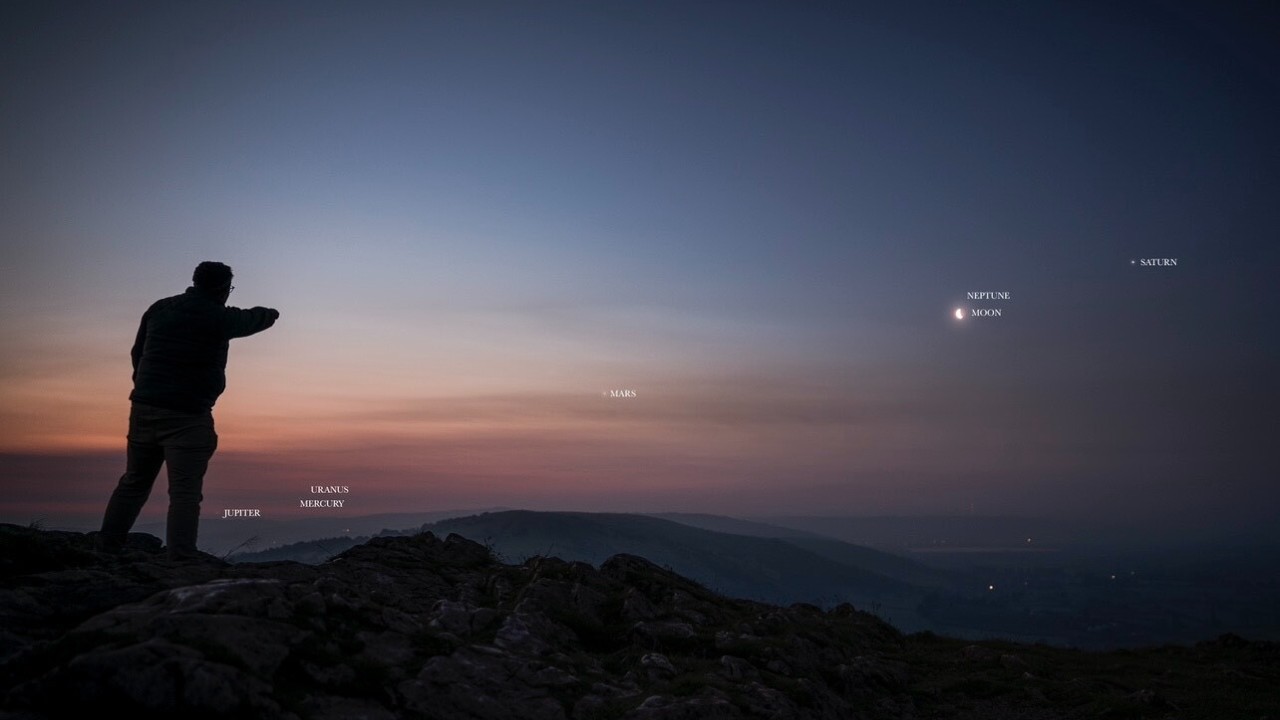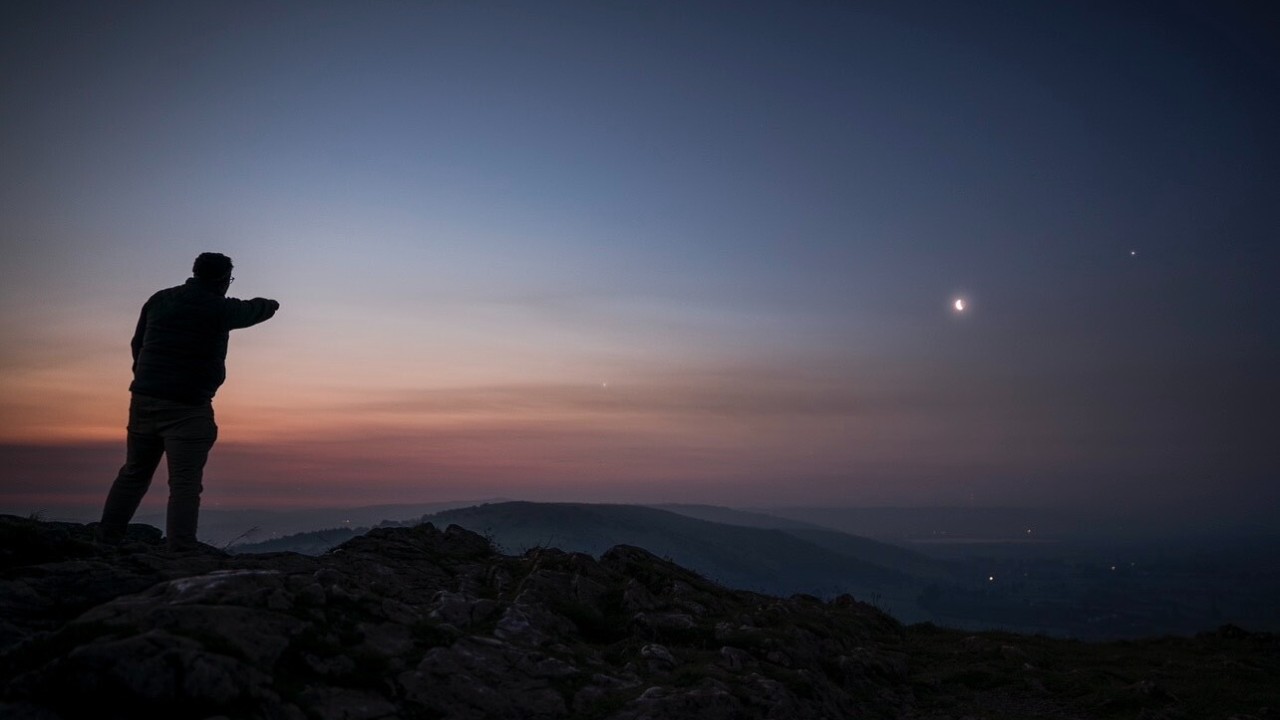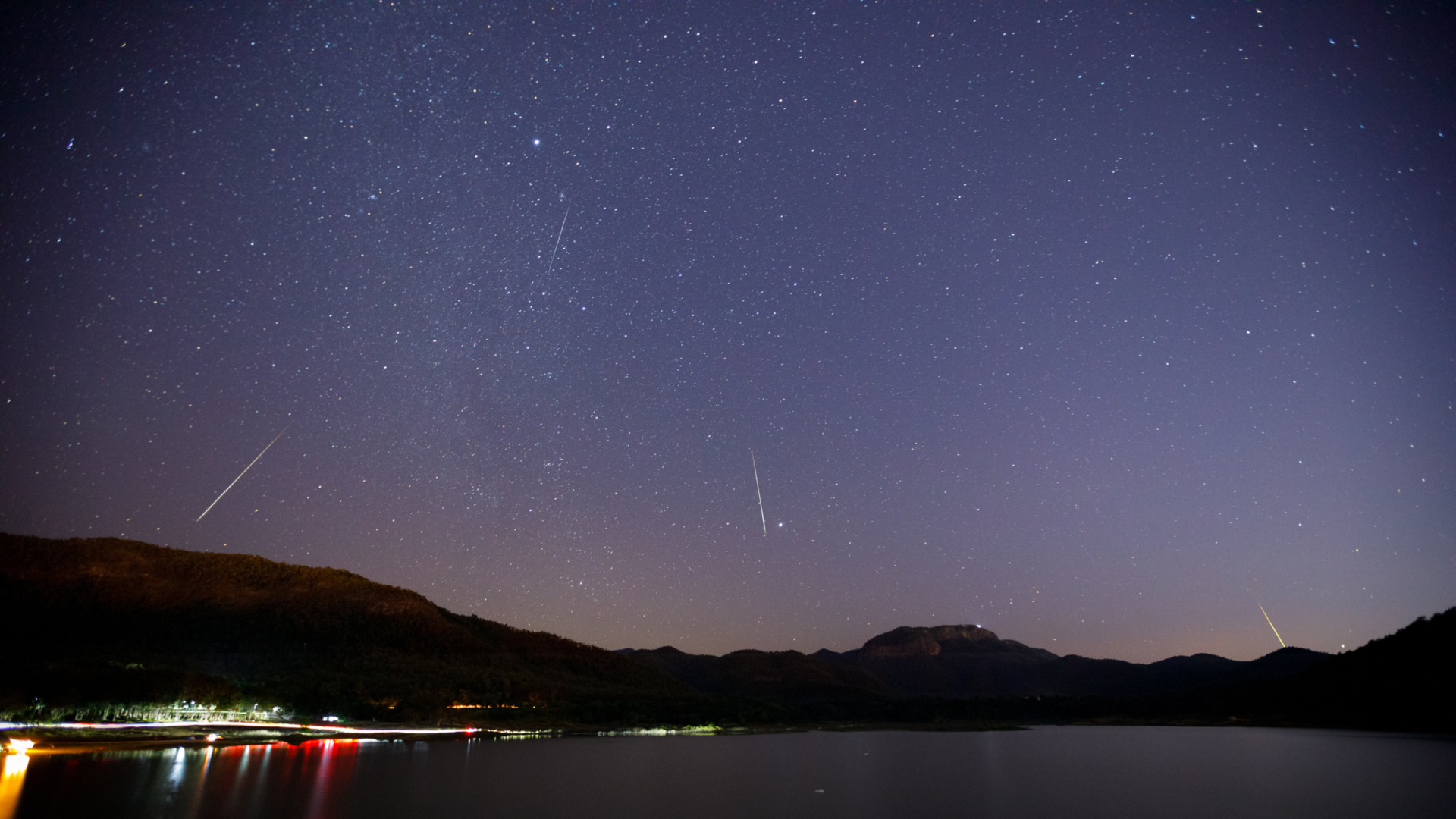Astrophotographer captures planetary parade with the moon in stunning photo
Astrophotographer Josh Dury was able to capture Jupiter, Mercury, Uranus, Mars, Neptune, Saturn and the moon in one single image during a planetary alignment on June 1, 2024.

The much-hyped planetary alignment of June may not have been the jaw-dropping naked-eye spectacle some made it out to be, but it still made for some stunning astrophotography.
Josh Dury of Somerset, England caught the planetary parade on June 1, 2024, from atop Crooks Peak, a popular and historic outcropping of rock in the Mendip Hills.
As Space.com night sky columnist Joe Rao pointed out, the planetary alignment was overhyped on social media as some of the planets would be quite difficult to see at all, much less to the unaided eye. Luckily, with the aid of some clever photography, Dury was able to photograph Jupiter, Uranus, Mercury, Mars, Neptune and Saturn as they lined up alongside a crescent moon.
Related: The brightest planets in June's night sky: How to see them (and when)
Read more: Night sky, June 2024: What you can see tonight
Dury was able to produce this image by taking multiple exposures and combining them into one image. Some of the planets in this planetary alignment were quite close to the sun in the early morning sky, meaning different types of camera settings were needed to capture each one.

Looking for a telescope to see the planets in the night sky? We recommend the Celestron Astro Fi 102 as the top pick in our best beginner's telescope guide.
"On Saturday morning when I captured this photograph, I was amazed to see Saturn, the moon and Mars," Dury told Space.com via email. "I needed to capture separate exposures in order to capture the fainter planets as well as Jupiter, Uranus and Mercury closer to the glare of the sun; this image is therefore a composite to capture this perspective."
Despite having taken scores of photographs of the night sky, Dury says capturing this image was a great opportunity to consider humanity's place in the cosmos.
Breaking space news, the latest updates on rocket launches, skywatching events and more!
"It is quite amazing in taking a moment to step back and appreciate the sheer scale and perspective of our place in the universe," Dury said.
Want to see the visible planets of the solar system for yourself? Be sure to check out our best telescopes for viewing planets guide and our more general guides for the best binoculars and the best telescopes.
And if you're interested in dabbling in your own impressive skywatching photography, don't miss our guide on what equipment you need to see and photograph the planets. We also have recommendations for the best cameras for astrophotography and the best lenses for astrophotography.
Editor's Note: If you get a great photo of any of the planets and would like to share it with Space.com's readers, send your photo(s), comments, and your name and location to spacephotos@space.com.

Brett is curious about emerging aerospace technologies, alternative launch concepts, military space developments and uncrewed aircraft systems. Brett's work has appeared on Scientific American, The War Zone, Popular Science, the History Channel, Science Discovery and more. Brett has degrees from Clemson University and the University of North Carolina at Charlotte. In his free time, Brett enjoys skywatching throughout the dark skies of the Appalachian mountains.

